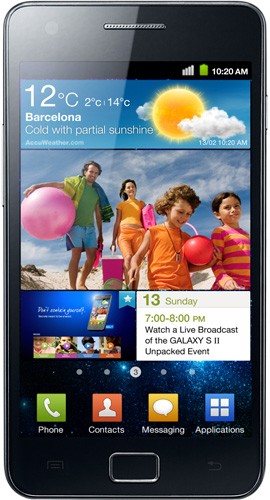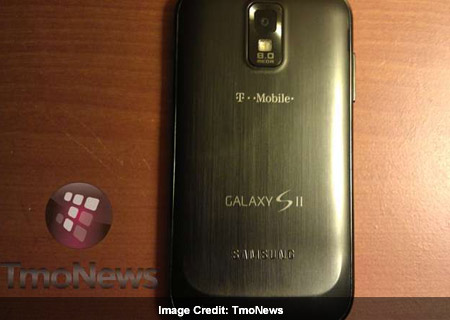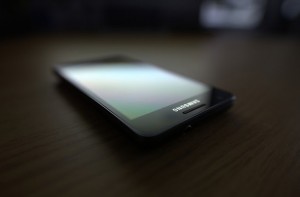
Ask a Captivate owner on AT&T what their phone is and they might scramble for the name before coming up with it. Ask an Epic 4G owner on Sprint what their phone is and they will say it’s the Epic and has an epic keyboard. Ask a Fascinate owner on Verizon what their phone is and they’ll tell you they’re not sure but would be happy to Bing it for you. But ask a Galaxy S owner in Europe what their phone is and they’ll give you the answer anyone could have supplied for the above -- it’s a Samsung Galaxy S!
At least, that’s how the story is supposed to go. And in reality, Samsung did a great job last year pulling off the extremely rare in American smartphone launches. They managed to launch the same basic phone on all four carriers in the U.S. at roughly the same time. Sure, you could disqualify the Epic on Sprint because they stuck a keyboard and a WiMax radio on there, but the basics of the phones were the same: A 4-inch Super AMOLED screen, a 1GHz Hummingbird processor and the TouchWiz UI. Although each carrier got in there and messed around to make the phones all look and perform a little differently, there was a synergy across the line that gave the phones an identity.
That identity was a serious win for Samsung. While the stylings of TouchWiz might not appeal to many people (and has landed Samsung in the middle of a trade dress dispute with Apple), the Galaxy S line was a giant success last year. For an OEM that tends to bend over backward for carriers, Samsung did a little better job at putting Galaxy S branding on the phones and maintaining the core of the phone. As each new phone rolled out, there was little doubt that it would perform well and meet expectations, even if Verizon chose to mess around with the firmware and replace Google services with those from Microsoft.

A number of people were hoping that Samsung would take that success and go further this year. With the introduction of the Galaxy S II, maybe Samsung would take that phone to U.S. carriers with more clout than before and insist they not make too many customizations. That was always a pipe dream for a company that makes so many variations that it’s not even within their DNA to think to insist on a single model. The Galaxy S II line has yet to be formally announced in the U.S., but some details are leaking out that are sure to disappoint many. The diversity (fragmentation?) of the line is worse than last year!
For starters, Samsung confirmed months ago that the Galaxy S II that would be distributed worldwide would have some variations inside. The Galaxy S II is the first phone to showcase Samsung’s own dual-core Exynos processor. Like the Hummingbird processor from last year, the Exynos is a huge part of the story with the Galaxy S II. By all accounts, it seems to be the king of mobile chips with the possible exception of Apple’s A5 processor. It’s one reason that the phone has blown the doors off the benchmarks its been tested against and one reason why the phone was reviewed so highly by a number of sites upon its European release. Performance matters, and the Exynos chip is a huge part of this. In March, however, ITProPortal reported that Samsung confirmed they are going to ship some Galaxy S II units with Nvidia’s Tegra 2 processors. They intend to minimize confusion by separating the regions the different models are sent to, but that does little for establishing one identity for the handset that carries the same name.
For Samsung, it makes sense from a production standpoint. The Galaxy S sold so well last year that they have to hedge their bets in case they can’t produce enough chips to fill all of the demand for the new phone. Still, if the “canonical” Galaxy S II gets reviewed with certain performance, should Samsung be able to misrepresent its product with an entirely different and inferior processor? This isn’t the first time Samsung has done this. After 3G versions of the original Galaxy Tab failed to make much impact, Samsung released the WiFi-only version in the U.S. at the seemingly low price of $350. What they didn’t bother telling anyone, including associates such as Amazon, was that they swapped out the Hummingbird Processor for an inferior Texas Instruments OMAP chip. How this is considered acceptable practice is beyond us.

So while we all knew that U.S. carriers would release different variations of the Galaxy S II, it’s a bit surprising that they’re going farther than anyone realized. First of all, it appears that Samsung is going to further mess around with yet another processor type in T-Mobile’s Hercules. The Hercules has now been reported by multiple sources to use a Qualcomm chipset, meaning that Samsung is going to be supporting all three major mobile processor types in their “single” Galaxy S II line. Further confounding everyone is the increasing evidence that the Hercules and the Verizon version, possibly named the Stratosphere, will sport 4.5" Super AMOLED Plus screens. That’s even larger than the 4.3" Super AMOLED Plus display on both the European Galaxy S II and the rumored Sprint Epic Touch 4G. Putting aside the question of just how absurd an 800 x 480 resolution looks on a 4.5" screen, this is just more variation that could impact consistency.

Since this is the U.S., what would a Samsung line be without differences in the radio and internet technologies? Verizon’s version is rumored to have LTE onboard, and Sprint’s Epic Touch 4G will run on WiMax just like last year’s Epic. Even if the Verizon version doesn’t have LTE, a Korean variation has popped up with LTE 800 MHz radio and a 1.5 GHz Qualcomm chipset. Exactly how many variations do they plan on making?
So, let’s recap: Three processor types, two different screen sizes, three different radio technologies, handfuls of frequencies, different hardware chassis, and probably different amounts of RAM. For all of the success Samsung had with the Galaxy S last year, they had a number of problems with screens, radio performance, GPS and other areas. It’s hard to believe that some of that didn’t come from the unnecessary variation within the line. With the expanding differences in the Galaxy S II this year, it’s reasonable to expect a slew of issues as the different phones roll out across the globe and in the U.S. If that happens, Samsung may be glad that they diluted their brand with so many different names and models.